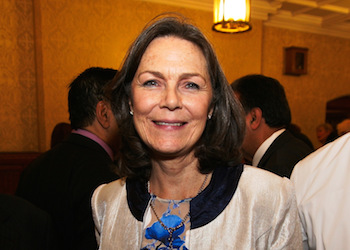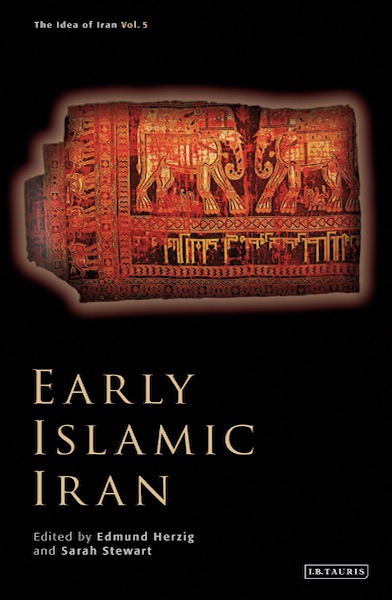Early Islamic Iran
ow did Iran remain distinctively Iranian in the centuries which followed the Arab Conquest? How did it retain its cultural distinctiveness after the displacement of Zoroastrianism – state religion of the Persian empire – by Islam? This fifth volume in The Idea of Iran series traces that critical period in Iranian history when ancient tradition were transformed uring the country;s conversation and the establishment of Islam. Distinguished contributors discuss, from a variety of literary, artistic, religious and cultural perspectives, the innovative years around the end of the first millenium C.E., when the political strength of the Abbasid Caliphate was on the wane and the eastern lands of the Islamic empire began to take on a fresh ‘Persianate’ or ‘Perso-Islamic’ character. Separate chapters engage with ideas of kingship, authority and identity, and their fascinating expression through the written word, architecture and the visual arts.
Luke Treadwell discusses the Samandis, the last royal house of Iranian extraction to rule eastern Iran before the coming of the Turks. he argues that seeing the Samanids as a Central Asian dynasty is the key to understanding their broader history. Ulrich Marzolph addresses the survival of ancient Persian tales in world literature and examines the extent to which Islamic narratives of the ancient period were governed by ancient concepts, most of which relate to Zoroastrian tradition. The late Oleg Grabar explores the arts of Iran in Late Antiquity, a topic complicated by the indeterminacy of the borders of late antique Iran as well as by the complex social and cultural relations between several dynasties. He asks whether it is appropriate to talk of an ‘Iranian’ art during these centuries or of several artistic movements in an iranian land. Mohsen Zakeri addresses the ancient Zurvanite cosmogonic myths expounded in the Pahlavi texts, specifically in the Sindbadnama (or the Prince, the Concubine, an the Seven Viziers). A.C.S. Peacock assess the preoccupations of the early Persian historians and their distinctive legacy. Looking at its historical context and social-cultural functions, Louise Marlow examines advice literature in tenth and eleventh-century Iran and in early Persian prose writing. Jonathan M. Bloom shows how its new Arab rulers were able to transform Iran’s artistic heritage to create a new visual language of power in architecture and the portable arts. Investigating the soaring tomb tower known as the Gunbad-e Qabus, Melanie Michailidis demonstrates that this funerary architecture not only commemorated but also asserted the legitimacy of the rulers of the Bavandid dynasty. Alan Williams examines authority and identity in ninth-century C.E. books in Pahlavi. He shows that these were composed or redacte in order to consolidate or defend the ritual or theological traditions that struggled to survive under early Islamic domination.Finally, Roy Parviz Mottahedeh explores the idea of Iran in the Buyid dominions, including the revival of Persian titles and given names among Muslims in the Buyid period.
Editors

Professor Edmund Herzig holds the Soudavar Chair in Persian Studies at the Oriental Institute and is a Fellow of Wadham College at the University of Oxford. He received his BA in Russian and Persian from the University of Cambridge and his DPhil in Oriental Studies at the University of Oxford. His thesis was entitled ‘The Armenian Merchants of New Julfa, Isfahan: A Study in Pre-Modern Asian Trade’. His principal research interests are the contemporary history of Iran (currently focusing on the political and international history of the Islamic Republic, and on the relationship between history and national identity in modern Iran); Safavid history; the history of Armenia and the Armenians with special interest in the Armenians of Iran. Recent publications include ‘The Armenians: Past and Present in the Making of National Identity’, with M. Kurkchiyan (2005); ‘Regionalism, Iran and Central Asia’ in International Affairs (2004); ‘Venice and the Julfa Armenian Merchants’ in B. L. Zekiyan and A. Ferrari eds. ‘Gli Armeni e Venezia’.

Dr Sarah Stewart is Lecturer in Zoroastrianism in the Department of the Study of Religions at the School of Oriental and African Studies, University of London and Deputy Director of the London Middle East Institute, also at SOAS. She has been co-convenor of the ‘Idea of Iran’ symposia since its inception in 2006 and has co-edited five volumes in the ‘Idea of Iran’ publication series with I.B.Tauris. She serves on the Academic Council of the Iran Heritage Foundation and has been a longstanding Fellow of the British Institute of Persian Studies, most recently serving as its Honorary Secretary until 2013, in which year Dr Stewart co-organised the acclaimed exhibition: ‘The Everlasting Flame: Zoroastrianism in History and Imagination’. Her publications include studies on Parsi and Iranian-Zoroastrian living traditions and is currently working on a publication (in collaboration with Mandana Moavenat) on contemporary Zoroastrianism in Iran.


